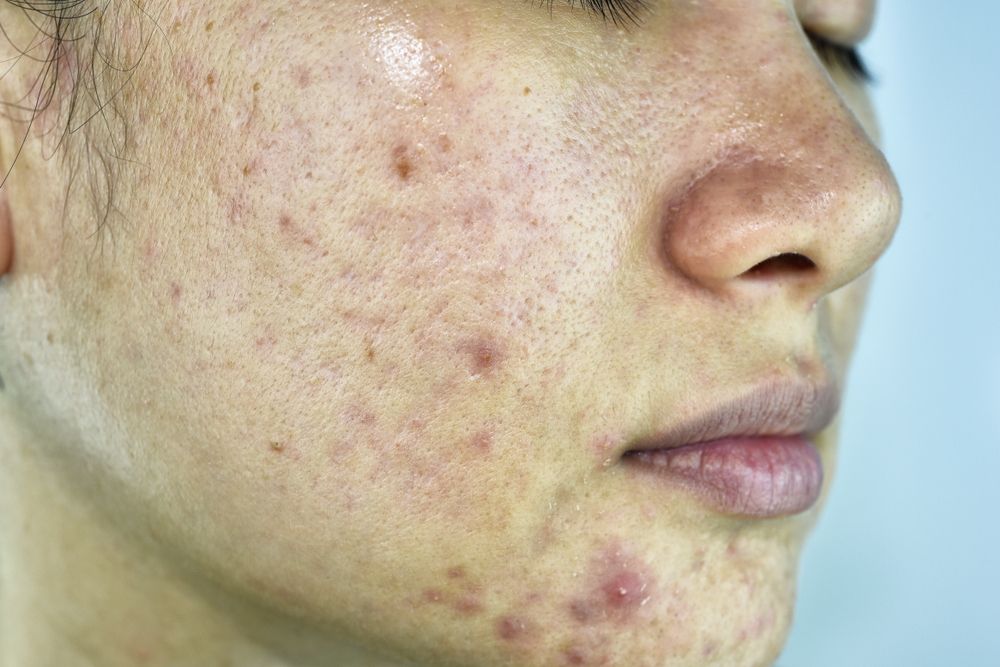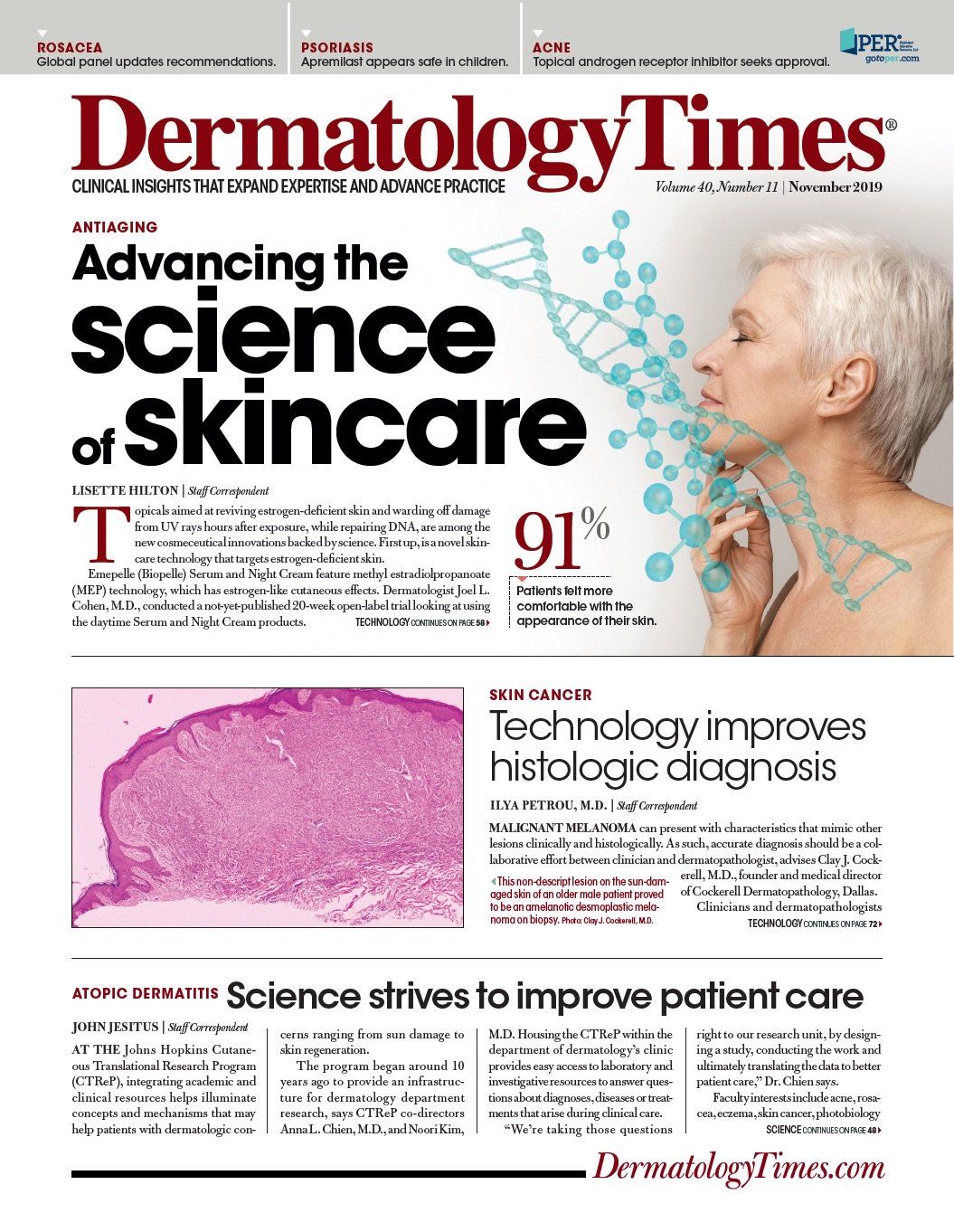- Case-Based Roundtable
- General Dermatology
- Eczema
- Chronic Hand Eczema
- Alopecia
- Aesthetics
- Vitiligo
- COVID-19
- Actinic Keratosis
- Precision Medicine and Biologics
- Rare Disease
- Wound Care
- Rosacea
- Psoriasis
- Psoriatic Arthritis
- Atopic Dermatitis
- Melasma
- NP and PA
- Skin Cancer
- Hidradenitis Suppurativa
- Drug Watch
- Pigmentary Disorders
- Acne
- Pediatric Dermatology
- Practice Management
- Prurigo Nodularis
- Buy-and-Bill
Publication
Article
Dermatology Times
Fat may play a protective role in acne
Author(s):
Being overweight may have a protective effect on whether adolescents develop acne, according to a new study of more than 600,400 Israeli youth.
“In contrast to the common misconception among dermatologists and patients, we found that overweight and obesity are inversely associated with acne in a dose-dependent matter,” says study author Igor Snast, M.D. (©ArtfullyPhotographer/Shutterstock.com)

Being overweight may have a protective effect on whether adolescents develop acne, according to a new study of more than 600,400 Israeli youth.
“In contrast to the common misconception among dermatologists and patients, we found that overweight and obesity are inversely associated with acne in a dose-dependent matter,” says study author Igor Snast, M.D., a dermatologist at Rabin Medical Center, Beilinson Hospital, Petach Tikva, Israel.
NEW: Novel acne cream seeks FDA approval
Prior studies looking at adolescent body mass index (BMI) and acne have yielded conflicting results with some showing
a greater likelihood of acne with increasing weight and others suggesting overweight and obesity have a protective effect when it comes to teenage acne.
Often, the thinking has been that the more overweight the adolescent, the more likely it is that child will have acne. The Western diet has been implicated as not only a factor for obesity but also with increasing acne prevalence. Physiologic factors, including the release of adipokine-driven inflammatory cytokines has linked obesity to acne.
Dr. Snast and colleagues analyzed a national database of 299,163 males and 301,241 females, most about 18 years of
age, who were in Israel’s Army service.
According to World Health Organization BMI definitions of underweight, normal weight, overweight, obese and severely
obese, the researchers found overweight youth were 20% less likely to have acne than normal weight adolescents. Obese adolescents were 35% less likely and severely obese youth 50% less likely to have acne than normal weight teens.
With each one-unit BMI increase, the odds of acne decreased by 3.2%, according to the study.
RELATED: How to treat adult female acne
Overall, 17% of adolescents studied had been diagnosed as having acne during Army service between 2002 and 2015. But the differences in acne prevalence by weight category were notable. For example, nearly 20% of underweight males had the diagnosis compared to nearly 14% of severely obese males. The authors note that underweight females but not underweight males had a slightly decreased acne adjusted odds ratio, which could be attributed to the effects of lean body weight and sex hormones on acne, but that’s not clear.
The researchers couldn’t conclude there is a causal relationship between BMI and acne due to the study’s cross-sectional design. But they suggest that if there is a protective effect from excessive BMI, it could be due to “the increase in aromatase activity and peripheral conversion of androgens to estrogens induced by excessive adipose tissue.”
The findings imply that metabolically active adipose tissue has a protective role in acne, but more studies are needed to validate the findings, the authors write.
Rachna Bhandari, M.D., Ph.D., with Bucay Center for Dermatology and Aesthetics in San Antonio, tells Dermatology Times she was surprised by the study’s findings.
“We usually associate this condition as an inflammatory process, and given how obesity is often linked with the consumption of inflammatory foods such as sugar, gluten and dairy, the thought is that there is surely a link,” Dr. Bhandari says. “Having said that, it does make sense that the estrogen production (from long-standing adipose tissue) may be inhibiting sebum production, but that does not necessarily mean that consumption of high glycemic foods, regardless of a patient’s overweight or obesity status, may be triggering acne. I think I will continue my recommendation of avoidance of these foods and encourage a healthy lifestyle.”
READ MORE: Acne patients open to antibiotic-free treatment
The study suggest dermatologists shouldn’t look at BMI as a reason for a pediatric patient’s acne, according to Dr. Snast.
“Dermatologists should focus on other known factors that play a role in acne when counseling their patients (i.e. hormonal influences, drugs and diet),” Dr. Snast tells Dermatology Times. Â
References:
1. Snast I, Dalal A, Twig G, et al. Acne and obesity: A nationwide study of 600,404 adolescents. J Am
Acad Dermatol. 2019;81(3):723-729.






